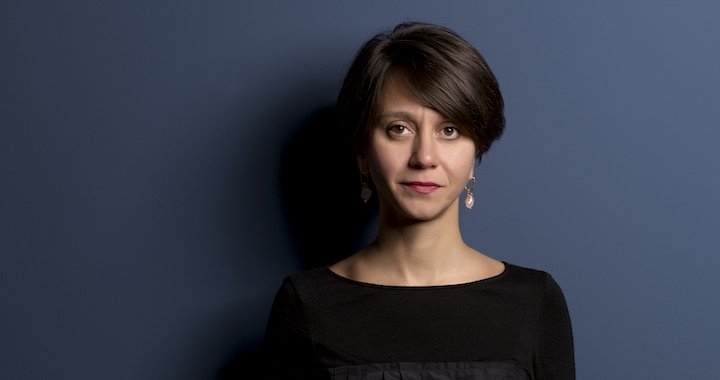
The challenging context of neighbourly relations
A conversation with Bige Örer, the director of the Istanbul Biennial
27/11/2017
The Istanbul Biennial, curated this year by the Scandinavian artist duet Elmgreen & Dragset, came to a close in mid-November. A concentrated version of the event will be on show from December 14 to April 29 at the Pinakothek der Moderne in Munich. Both events are titled A Good Neighbour. Considering the turbulent global context at the moment, this phrase is more important than ever and also contains a certain amount of irony. When the artist-curator duet announced the concept, the world was still a different place – Trump had not yet been elected president of the United States, and Turkey had not yet experienced an attempted coup.
Unlike the previous Istanbul Biennial – the 14th, curated by Carolyn Christov-Bakargiev – Elmgreen & Dragset made their version much more compact. The 15th biennial featured only 56 artists (instead of 100) and took place at six venues. All of the venues were within walking distance of each other and reflected a model of neighbourliness in miniature: two art institutions (Istanbul Modern and Pera Museum), a hammam, a school, a residential house and an artist’s workshop. Instead of the classic curator’s essay, this time there were 40 questions about what it means to be a good neighbour – a good neighbour in the broadest sense. However, reviews of the event later criticised it for presenting relatively little political art, considering the current situation in Turkey and its complicated relationship with Europe. Elmgreen & Dragset responded by stating that art is not journalism and that direct responses by art to specific political situations rarely help in solving those situations.
Although it is true that the message of the 15th Istanbul Biennial perhaps did not resemble a bunch of loud newspaper headlines, it was nevertheless powerful and unambiguous. It laid bare the harsh, emotional reality of nations, people, neighbours, cultures and religions living together, existing side by side, and often also the impossibility of doing so.
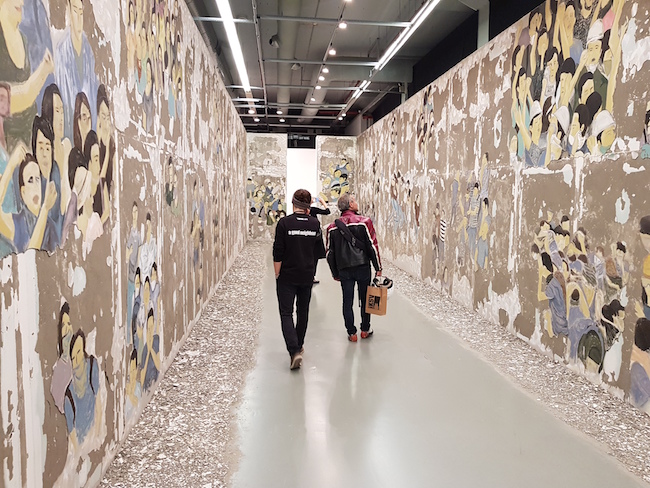
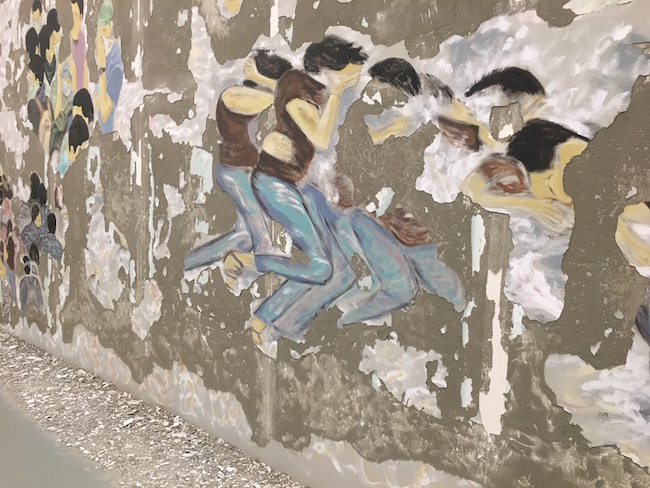
Latifa Echakhch’s mural Crowd Fade. Photo:
Among the most notable works of art at the biennial was Moroccan-French artist Latifa Echakhch’s mural Crowd Fade (2017), exhibited at the Istanbul Modern Art Museum. It consisted of a passageway several dozens of metres long, whose concrete walls were covered with images from the tragic protest demonstrations in Istanbul’s Gezi Park in 2013. The images were slowly chipping away from the wall and falling to the floor, like the dust of destroyed ideals. Walking through the narrow space felt like physically being trapped between the past and the future. Ironically, the future of the museum itself is currently unclear – it now stands effectively in the middle of a construction site, with rumours that it may soon have to relocate.

Adel Abdessemed. Cri. 2013. Photo:
Algerian artist Adel Abdessemed’s sculpture Cri (2013) was on show nearby. It was inspired by a black-and-white photograph taken in 1972 during the Vietnam War by photojournalist Nick Ut. The original photo shows four children fleeing from a flame-engulfed village. The one figure Abdessemed isolated from the image and froze in sculpture reminds us of the loss of home and safety and the constant presence of suffering and violence in this fragile world of ours.
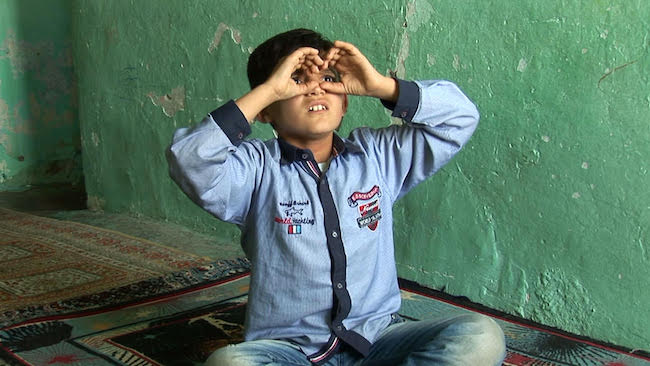
Erkan Özgen artwork. Photo: Sahir Ugur Eren
Almost every review of the biennial mentions Wonderland (2016), a work by Kurdish video artist Erkan Özgen exhibited at the Galata Greek Primary School. It shows a traumatic story told through sign language by a deaf-mute boy named Muhammed, who was forced to flee the horrors of war in his village in Syria.

Lungiswa Gqunta. Instalation Lawn I. Photo:
Another part of the concept at the 15th Istanbul Biennial was to shine a spotlight on young artists. Among these was Capetown-based South African artist Lungiswa Gqunta, whose installation Lawn I (2016–2017) was made of 3168 upside-down Coca-Cola bottles with the bottoms broken off. Filled with green petrol and placed next to each other on a large board, they resembled a lush, green carpet when viewed from a distance. Gqunta has said that this installation reminds her of her childhood during the Apartheid era, when green lawns could only be found around the homes of wealthy white families, as if emphasising their privileged status. To protect those lawns from unwanted guests, the tops of the fences surrounding them were covered with bottles with their bottoms broken off. The fences are still there today. In fact, there are even more of them now, ever higher and more absurd. Fences between neighbours, nations, cultures, religions.
I met Bige Örer, the director of the Istanbul Biennial, shortly before its closing. We met at the Istanbul Foundation for Culture and Arts (IKSV). Örer has studied political science and communications management at Marmara University and also in Toulouse, France. She has been the director of the Istanbul Biennial since 2008 and the vice president of the International Biennial Association.

Bige Örer with this year's Istanbul Biennal curators Elmgreen & Dragset. Photo: Muhsin Akgun
The international media criticised the biennial curated by Elmgreen & Dragset for being too tame, considering the recent political events in Turkey. They said it lacked political and social bite. On the other hand, although perhaps not very in-your-face, the message of the biennial was nevertheless very powerful, both in a political and social sense. What’s your reaction to these criticisms?
I really feel that all the biennials that we do are very engaged with the current political and social situation both in Turkey and in the world in general. But, of course, different curators have different ways of dealing with these things. First of all, the title of the biennial – “A good neighbour” – I think it’s able to address many urgent issues that we are now witnessing and are a part of. And at the same time, Elmgreen & Dragset are artists themselves. We talked a lot about the idea of the biennial, that we do not want to repeat the language of the government and politicians, nor the mass media. We really wanted to give space to artists to find new ways of speaking the truth, of engaging with different issues.
In this biennial there are many works that deal with the issues of migration, war, urban transformation, gender politics, minority issues. There are so many urgent issues of our time, but sometimes you feel like there are some prejudices and that sometimes people visit the biennial with a certain kind of agenda. But I think that artists do not want to play the victim; they really want to work on finding different ways of living together. One of the main questions of this biennial was how do we, with our different identities, live together in a society? I think this is one of the main reasons why the world is suffering – how to live together with your neighbours? I’ve always believed that the personal is political and the political is personal. There are so many personal stories of artists in this exhibition, and that makes it very unique.

Alejandro Almanza Pereda. Photo:
You’ve been the director of the Istanbul Biennial since 2008. During that time, not only has the Istanbul Biennial changed, but also the global landscape of art biennials has changed. There are now many more such events, and a new one is announced almost every year in some part of the world. Next summer Riga will have its own biennial, too. The forging and maintaining of one’s identity is a challenge. How do you view the Istanbul Biennial’s identity, also in a global context? For example, next to big players like the Venice and Lyon biennials?
I think that the Istanbul Biennial’s strength is in its close relationship with the city. We always try to engage with the city and with the local context as much as possible. For example, we use different locations throughout the city, and we also try to keep the research process as open as possible, such as organising learning programmes and artist meetings with younger artists.
One of our main priorities is also to produce new works of art, new commissions. For example, for this biennial we produced more than 30 new works of art. We really try to allocate more resources, more time, more research in the making of the biennial. The main objective is to create a meaningful and experimental exhibition format that is also able to create knowledge – a public space that inspires young people. For example, the object of the Istanbul Biennial has never been to promote the city. There are different models for biennials, some of them being established and supported by local governments, and so on.
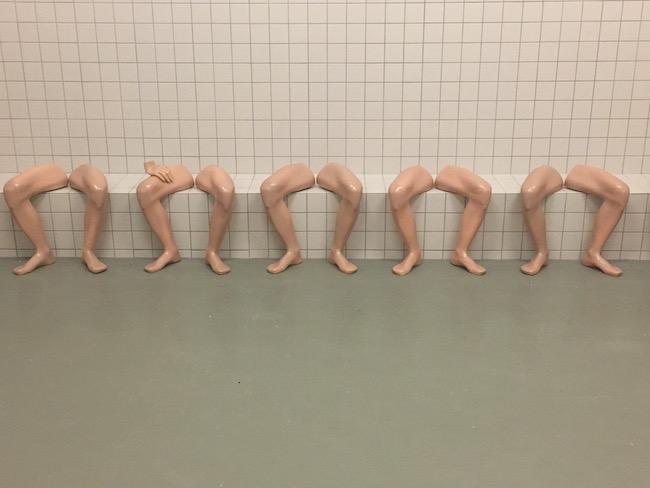
Candeğer Fortun. Untitled. 1994-96. Photo:
But in the case of the Istanbul Biennial, state support is very limited.
It changes from year to year, but usually no more than four or five percent of our budget is publicly funded. So, it’s really an initiative of art professionals – in a way, we’ve created a space, something like a contemporary art museum. The international aspect of the biennial is also very important, because it’s a space where artists from Turkey are able to present themselves in an international context. At the same time, we’re also thinking about how to engage more with the local scene. We have special programmes for children, and we do projects to keep the attention of different groups of society. It’s an international event, but it also has roots in the city.
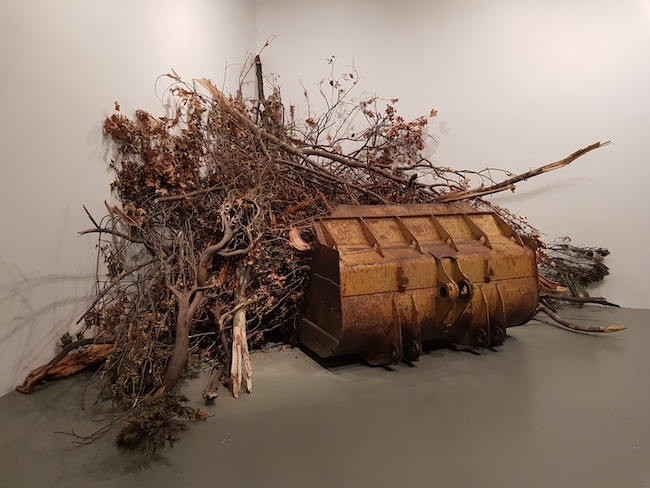
Alper Aydin. D8M, 2017. Photo:
The Istanbul Biennial has been free of charge for visitors since 2013. What has this decision changed, and do you think it was the right thing to do?
I think it was a very good decision. We made the decision after the Gezi Park protests, which began on May 28, 2013. Our goal was to create a truly public space, without any limitations like tickets. It has really increased the number of visitors, from 100,000 before to 540,000 visitors at our last biennial. The numbers will probably be smaller this year because we only had six locations, compared to 36 locations for previous biennials. But still, for a city like Istanbul, the fact that a two-month contemporary art exhibition can attract hundreds of thousands of people is very significant. And it’s not only one specific group of society that visits the biennial – these are people of all ages and from all kinds of backgrounds. Small school groups, singles, families, etc. It’s important for us to maintain this diversity among the visitors. And I think that our decision to make the event free of charge also greatly influenced the visibility of the biennial.
This year’s biennial was much more concentrated, both in terms of venues and the number of artists represented. Was that your decision or the curators’?
We decided on the locations together with the curators, and one of the reasons for this was because the title of the biennial is “A good neighbour”. The curators proposed that the locations should be close to each other, like neighbours, in a way. And I thought that it worked well for this concept. So, we found these spaces that were within walking distance of each other, and I think that the way the locations are used also gives sufficient space to the artists’ projects. The works of art can breathe in their spaces. This biennial also offers different ways of experiencing art, from group exhibitions to small, intimate shows.
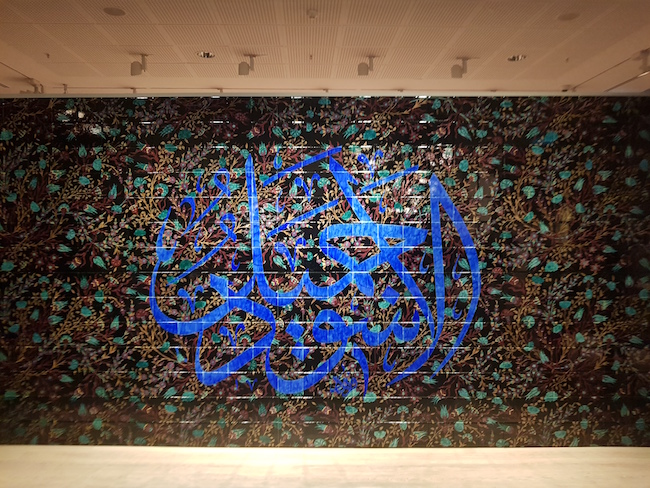
Fred Wilson. Afro Kismet, 2017. Photo:
How are the curators for the Istanbul Biennial chosen? For example, Elmgreen & Dragset are radically different from Carolyn Christov-Bakargiev, who curated the previous biennial.
I’ve established an advisory board, which is composed of international and local curators and artists, and they come up with some proposals. And then we invite these candidates to come up with their own proposals, I do interviews together with the general director of the foundation, and then we decide. We consider the advice of the board, but in the end we are the ones who make the final decision. In the case of Elmgreen & Dragset, it was very important for us to work with people who were familiar with the scene and the city. Elmgreen & Dragset had participated in three biennials – 2001, 2011 and 2013 – so, they had been to Istanbul several times and had witnessed the transformation of both the scene and the city. In addition to their artistic vision, the other curatorial projects they’ve done in the past were also important, like the Nordic Pavilion at the Venice Biennale, or A Space Called Public in Munich. It was their curatorial projects that convinced us they could be curators of the Istanbul Biennial.
Before our meeting, I met with a well-known art collector in Turkey. When I asked him how he thought the local art scene had changed in the past five years, he said that it seems quite horizontal now. That is, neither growth nor downturn. What do you think?
There are some galleries that have closed, but at the same time there are also some new galleries. There are initiatives by younger artists and curators. I don’t think there’s a negative trend right now. But, of course, the context is so challenging, and I can’t say that the scene here is really flourishing, either. Artists here are struggling to survive and to find ways of engaging with the current context.
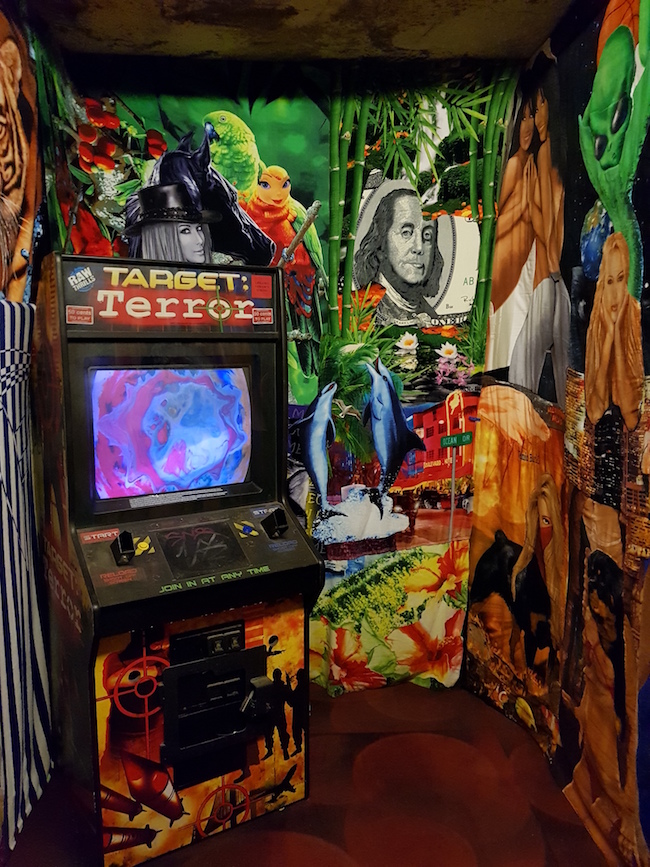
Johan Freeman, Justin Lowe. Scenario in the Shade, 2015-17. Photo: Una Meistere
How easy is it for young Turkish artists to become noticed, both on a local and international level?
In 2011 the SAHA non-governmental organisation was established, whose main goal is to support Turkish contemporary art. It has supported very many projects over the past seven years, and it’s a very important contribution to the art scene. Now the artists are able to travel more, study abroad, take part in residency programmes. Younger artists are either starting to work with galleries or they sometimes become a member of a collective in order to reach a wider audience. But I think they know that they have to work really hard, because there are not so many institutions there, there are not so many museums and grants in Turkey, which makes life difficult for artists. Most of the time they need to have another job, for example, they teach or they do other jobs to survive and to continue their art. This is one of the biggest challenges for young artists – the economic aspect, how to continue if you don’t have any additional resources. But if an artist has real passion and really wants to continue as an artist, they’ll find ways to do it.
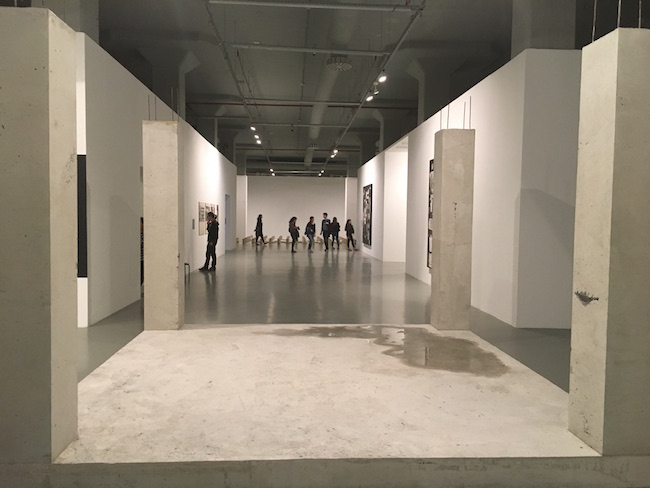
Exposition view of the Istanbul Biennial. Photo:
You live in a very complicated country in terms of politics and the social aspect. Do you think that art has the power to change society? Especially considering that nowadays there are more and more artists who are working on the border between art and social activism. Like Olafur Eliasson, for example.
I don’t think that art has the power to transform a society. Yes, there are more artists now who are working with this social aspect, however, I don’t think that every artist needs to be engaged in such a practice. But, of course, I appreciate the artists who choose to work with these objectives. For example, this year we worked with Zeyno Pekünlü, an artist and academician who coordinated the public programme for the Istanbul Biennial. She did a great job, involving people from many different fields, and every week we had at least one or two events. Sometimes cooking sessions, sometimes music jam sessions, sometimes talks, reading sessions. It was a way to create a space for a local community, a way to be together, to act together. To think about the future, about transformation. This is one of the examples of how the biennial is able to bring everyone together – a lawyer with a musician, a political scientist with an artist.
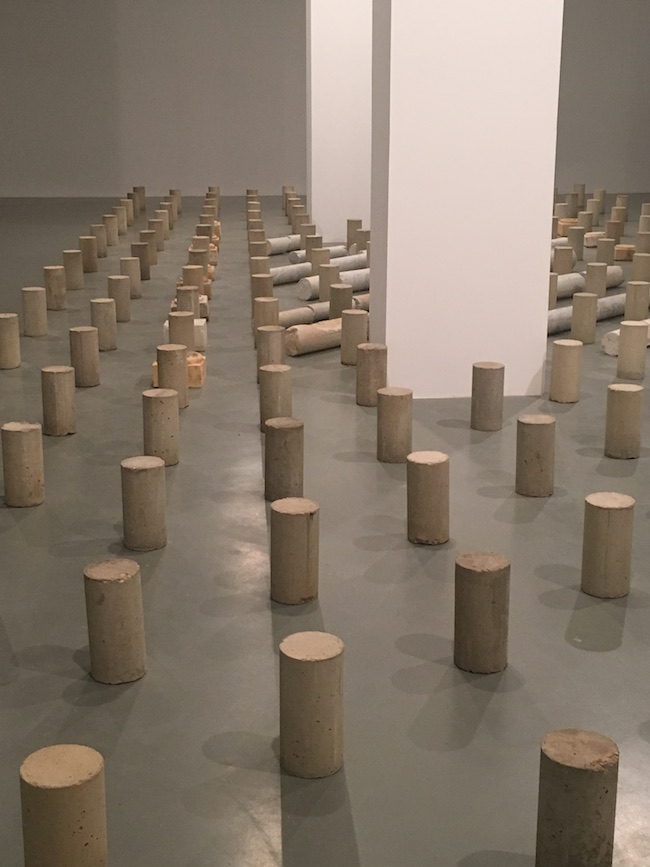
Rayyane Tabet. Colosse Aux Pieds D'Argile, 2015. Photo:
The concept for this biennial was developed before last year’s tragic events, the coup attempt on July 15, 2016. Did you change the event’s concept after that, or did it remain as originally planned?
We went with the original, with the concept that had been thought out by Elmgreen & Dragset, with the original theme “A good neighbour”. Of course, we discussed whether the theme was still relevant or not, and we decided that yes, it was still relevant. We decided to continue. We really wanted to focus on the exhibition, and we invited the artists to come to Istanbul for a research visit. We also wanted the artists to experience the city’s dynamics and the psychology of the city, so that they could find ways of working with it. All of the artists we invited were very happy and honoured to become a part of the biennial.
We didn’t change anything, and I think this strategy of keeping our space and also creating a space for the rest of society to breathe was correct. There wasn’t a single case of an artist we had invited saying no, I cannot come. On the contrary, they were very enthusiastic to come and to understand what’s really happening here in Turkey – what’s going on in addition to this turmoil, how do artists live here and produce here, how are intellectuals responding to everything that’s happening here.
In summary, do you think the biennial has been successful?
Yes! I think it was successful. I think it was really a beautiful exhibition, and the artists were happy to be a part of it. The curators were also happy to be here and to work on this edition of the biennial. We had lots of visitors, which is important. I think the biennial really created an atmosphere in the city that was able to bring people together. We had more than 100 events over the past two months. I think it kind of brought hope for the future. It brought a feeling of being stronger together, and I hope that will continue.
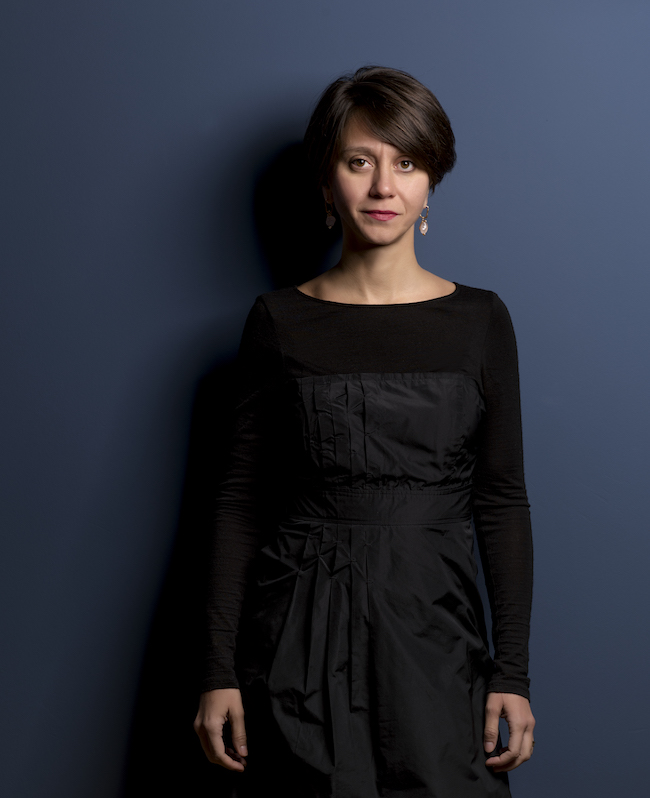
Bige Örer. Photo: Muhsin Akgun
Speaking about the future, how did the idea arise about the Istanbul Biennial collaborating with the Pinakothek der Moderne in Munich? What might be the greatest benefit from it, and isn’t there a risk that making the biennial into a museum exhibition will lessen its power?
The idea of circulating the knowledge and artistic production generated by the 15th Istanbul Biennial was formulated by me and the curators, Elmgreen & Dragset. The idea was welcomed by the Pinakothek der Moderne, and the museum will be hosting ten artists from the biennial as well as two other artists whose work responds to the biennial’s theme. We think it’s important to strengthen international collaborations through artistic projects at the present moment. We believe that the exhibition at the Pinakothek der Moderne is a unique exhibition derived from the biennial, but it is not the actual biennial itself. It’s great to see the continuity of the dialogue and discussion around the themes evoked by the biennial, such as migration, home and neighbours. And it offers a new space for the presentation of the artwork that was produced and presented in Istanbul.
Thank you for the conversation!